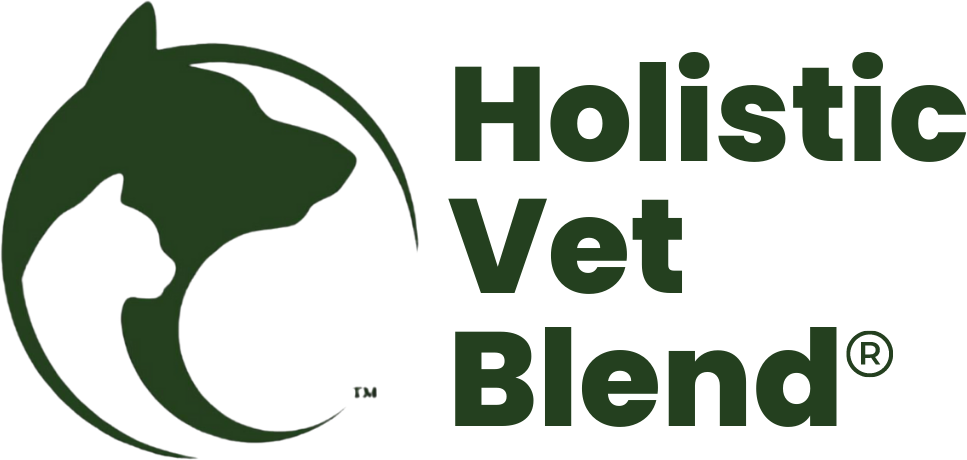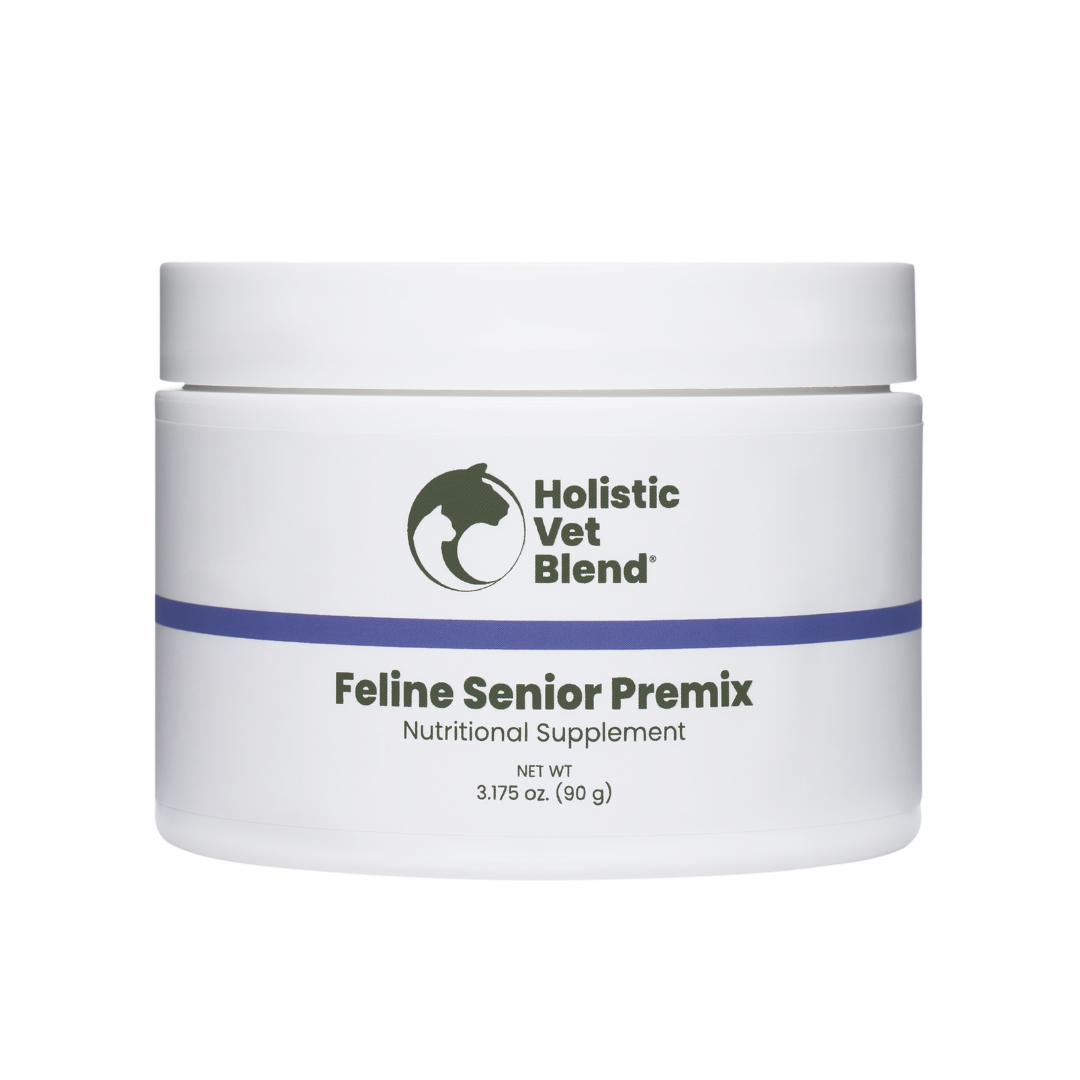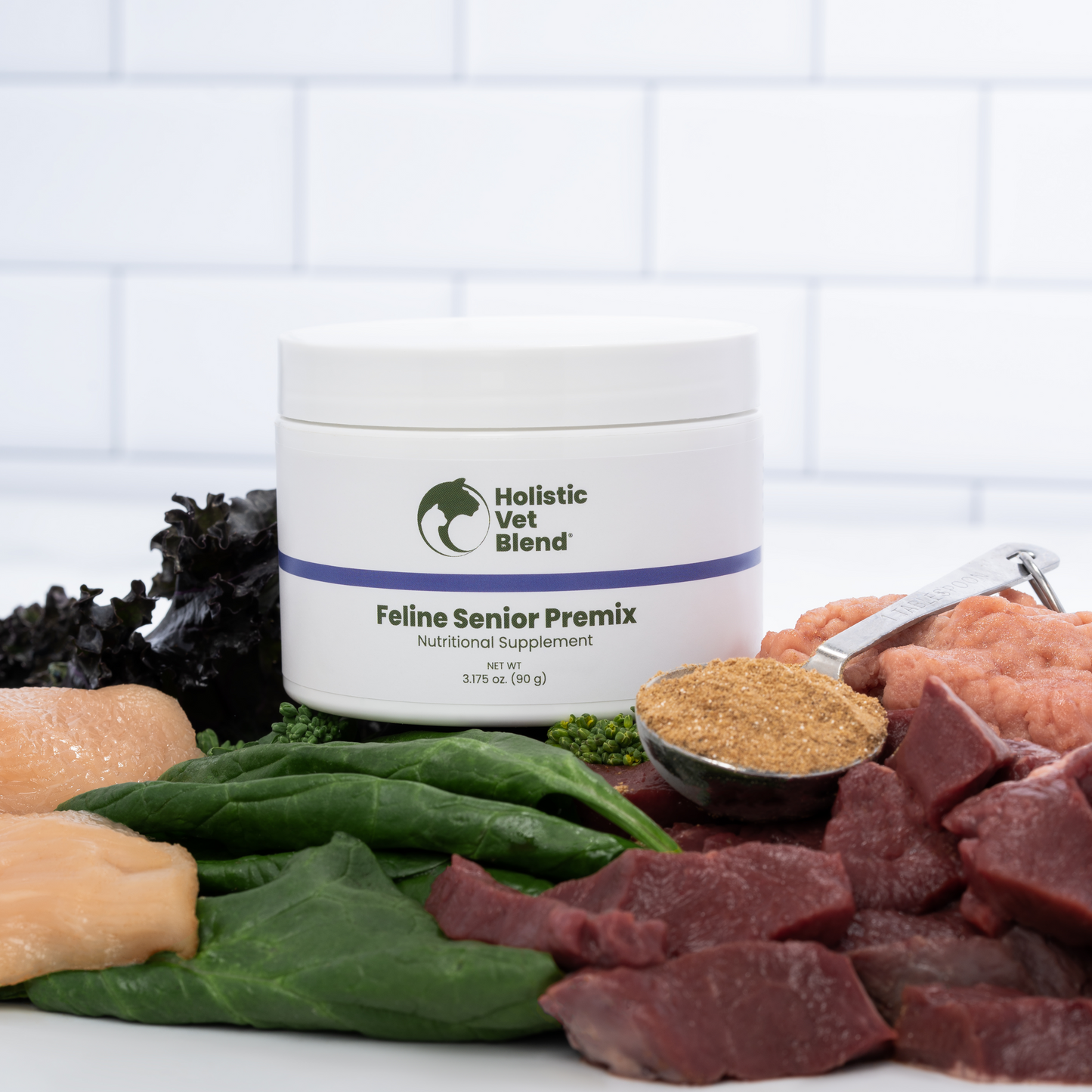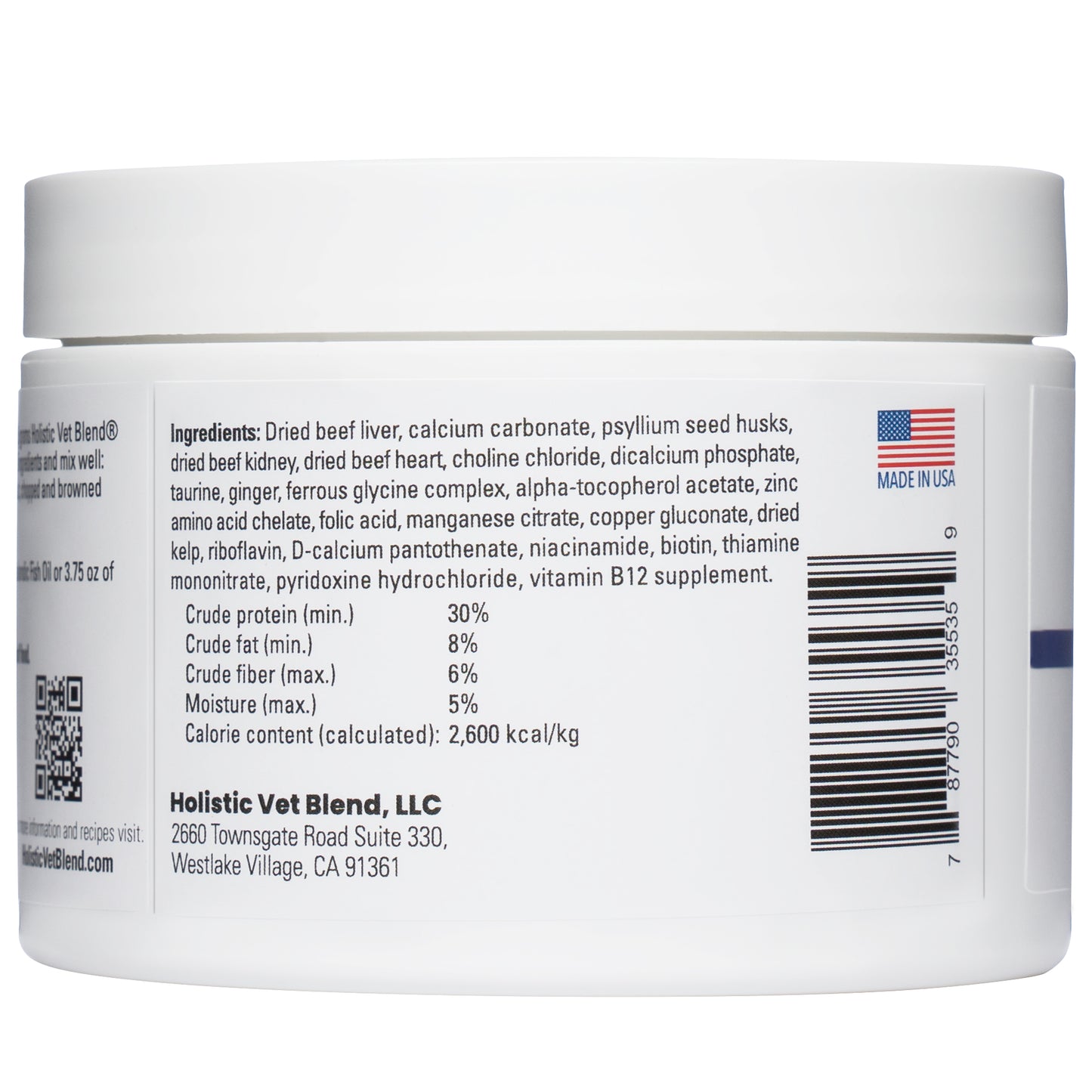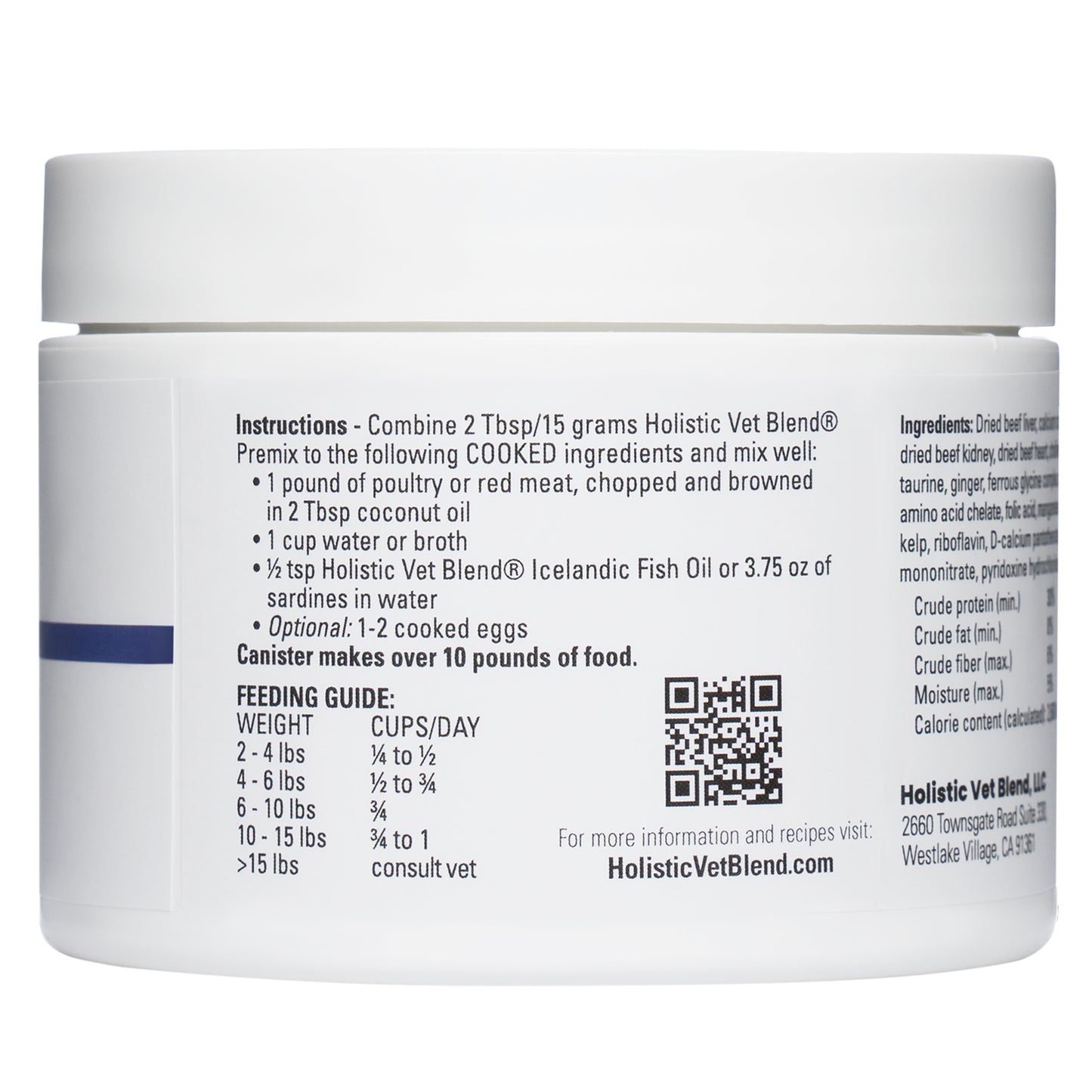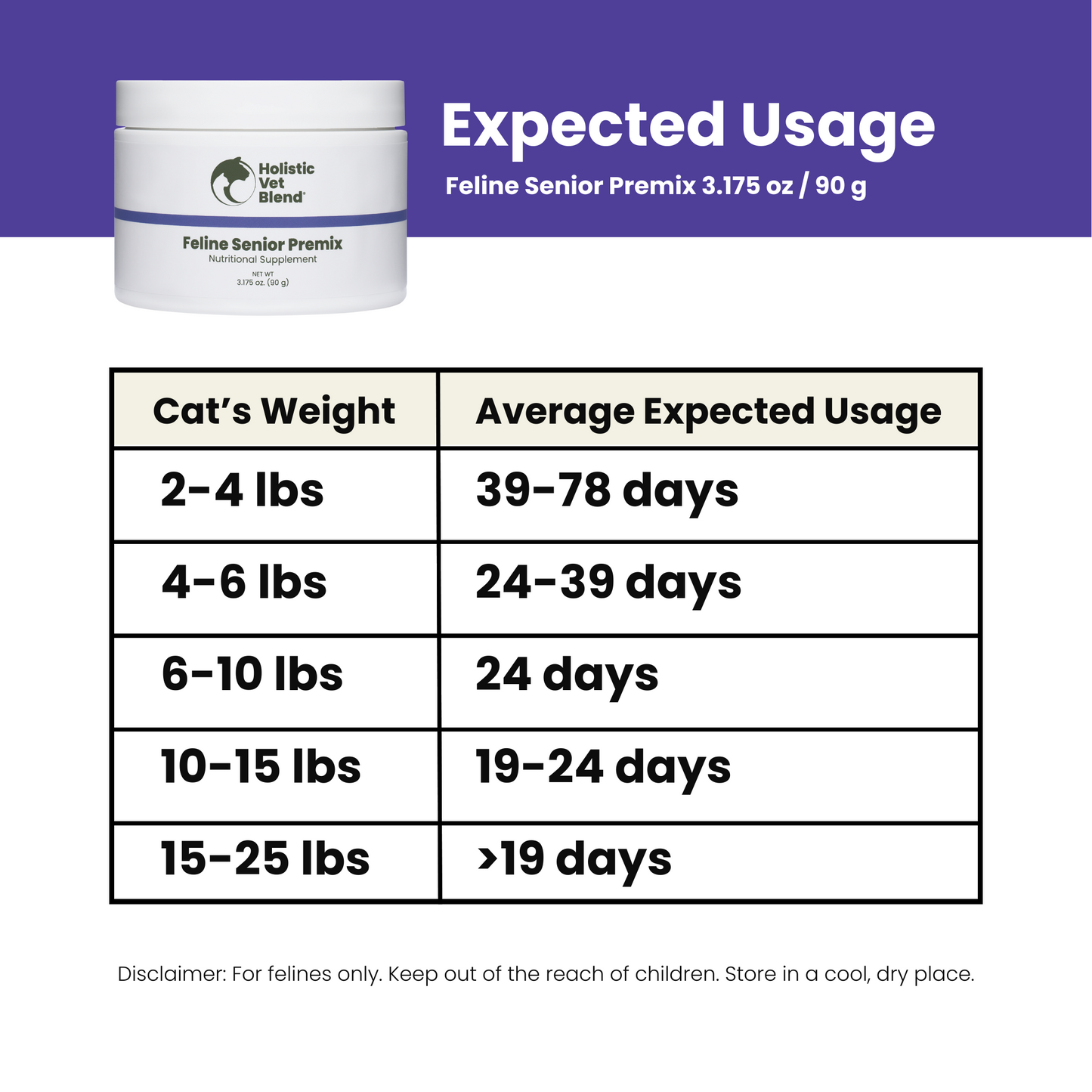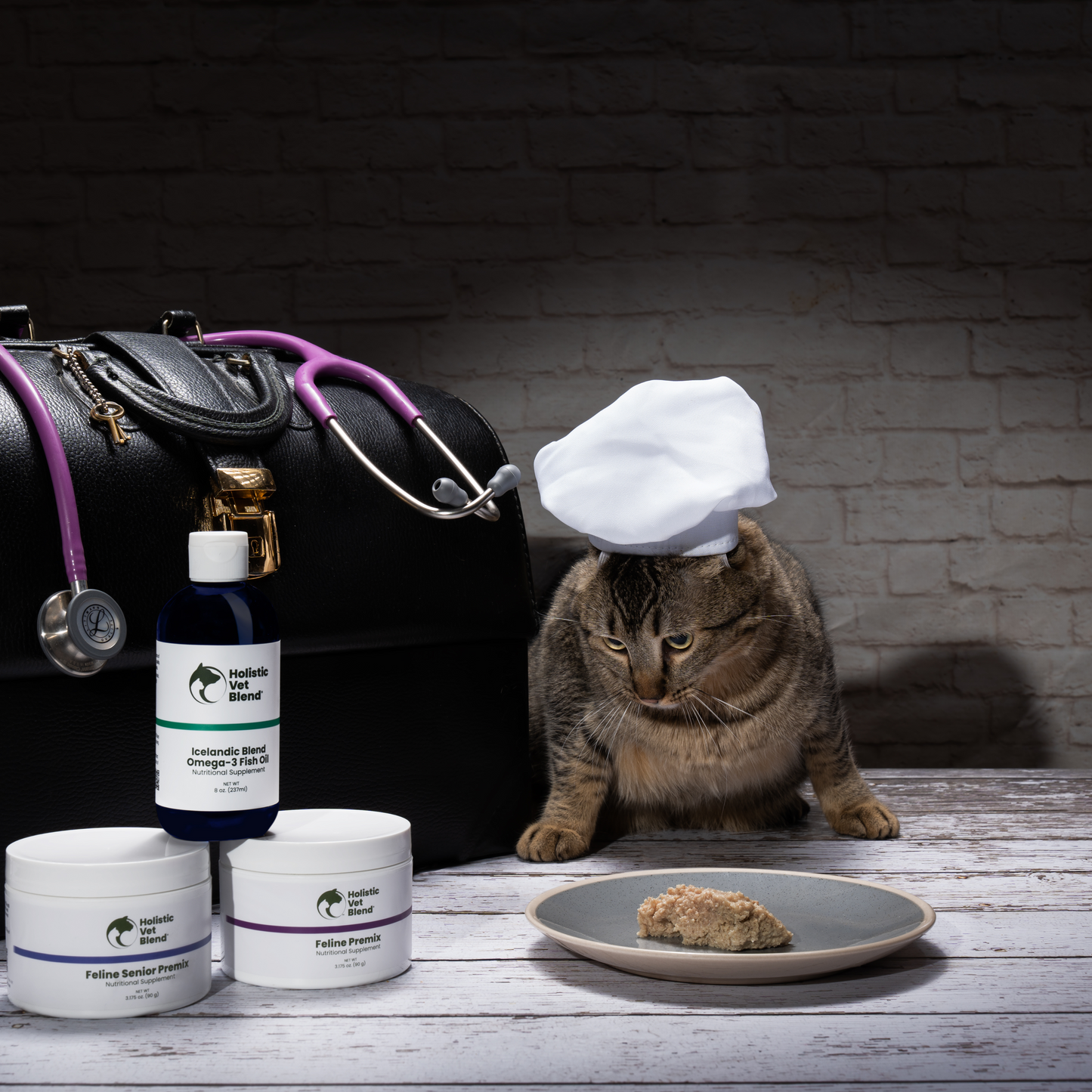This store requires javascript to be enabled for some features to work correctly.
Dried beef liver*, calcium carbonate, psyllium seed husk, dried beef kidney*, dried beef heart*, choline chloride, dicalcium phosphate, taurine, ginger, ferrous glycine complex, alpha-tocopherol acetate, zinc amino acid chelate, folic acid, manganese citrate, copper gluconate, dried kelp, riboflavin, D-calcium pantothenate, niacinamide, biotin, thiamine mononitrate, pyridoxine hydrochloride, vitamin B12 supplement
*from grass fed beef
The product is prepared in an FDA inspected facility that only manufactures human grade supplements and tests for heavy metals and bacterial contaminants.
Use the guide below to create your own recipes that cater to your cat’s unique palate.
MEAT: 1 pound of poultry or red meat, chopped and browned in 2 Tbsp coconut oil
LIQUID: 3/4 -1 cup low sodium broth or water
OMEGA-3: ½ tsp Holistic Vet Blend Omega-3 Icelandic Fish Oil OR tinned fish
EGGS: 1 or 2 cooked eggs (Optional)
PREMIX: 2 TBSP/15 g HVB Feline Premix or HVB Feline Senior Premix
1. Add HVB Feline Premix to one pound of cooked or raw meat.
2. Add water or broth (avoid onions and garlic in broth).
3. Add tinned fish (4.5 oz sardines in water OR 6 oz wild salmon OR 7.5 oz mackerel in water) or another omega-3 fatty acid source such as Holistic Vet Blend® Icelandic Omega-3 fish oil.
4. Add eggs if desired.
5. Blend or mix the recipe to the desired pâté consistency. You can use a food processor, an immersion blender, or any other type of blender to achieve whatever consistency you want.
This recipe yields approximately 1¾ pounds or 3 cups.
Keep up to 4 days of food in the refrigerator and freeze the rest.
More recipes are available in our free cookbook and on our YouTube channel.
This is a quick start recommendation for feeding your cat or kitten. You have to find a place to start, make a transition and adjust as needed. Monitor appetite and body condition to determine next steps and consult with your veterinarian when in doubt.
Feline weight in pounds:
2-4 pounds feed ¼ to ½ cup
4-6 pounds feed ½ to ¾ cup
6-10 pounds feed ¾ cup
10-15 pounds feed ¾ to 1 cup
15-25 pounds feed 1 to 1 ½ cups
Cats and kittens over 6 months of age can be fed once daily. If you chose to feed two daily meals I would recommend feeding 2/3 of the food in the morning and 1/3 of the food in the evening.
One canister contains enough premix to make meals for one month for the average cat.
Any cat over 6 to 8 years of age would benefit from the added B vitamins, fiber, and kidney-friendly Phosphorus levels in the senior blend. Cats are generally considered seniors at 8-10 years of age and “super seniors” or geriatric over 12-14 years.
Yes, the additional B vitamins are water soluble and easily eliminated by the body. Additional fiber is also not an issue.
Yes, but we generally recommend the Feline Blend for kittens; if adding egg add the shell as well for additional calcium.
No. You should prepare the recipe in its entirety and add the premix last and mix in well.
Make sure you download our free cookbook and check out our YouTube channel. All recipes can be prepared on the stove or in a pressure cooker or slow cooker. We also have raw recipes.
After cooking, the prepared diet can be refrigerated for 4 days. If feeding raw, the diet should be frozen in servings for up to 4 months and thawed out for each feeding thereafter. Cooked food can be refrigerated for up to 6 months.
The product was developed by a PhD animal nutritionist and a veterinarian.
The product is made in a facility that only uses ingredients fit for human consumption (no feed-grade ingredients). The product is manufactured in California.
A certificate of analysis is provided for each batch. The individual ingredients as well as the final batch are tested for bacteria (Salmonella, coliforms, E. Coli, Staph Aureus) and fungal pathogens, lead, mercury, and arsenic.
We recommend water or homemade broth or bone broth without salt added. Although rare, onion and garlic powder should be avoided as these can cause anemia.
Although many pets have done very well on raw diets, each individual pet and their family has different needs. AVMA does not recommend feeding raw diets due to the risks of exposure to zoonotic risks (spread of Campylobacter or Salmonella) to humans. Use proper hygiene, especially if there are immune-compromised individuals in the household. Dogs can shed these pathogens in their feces. An option is to lightly cook the meat and vegetables. Dogs cannot assimilate raw vegetables easily as they cannot break down the cell walls. The vegetables can be pureed or steamed instead.
Do not use raw eggs in the feline formula.
